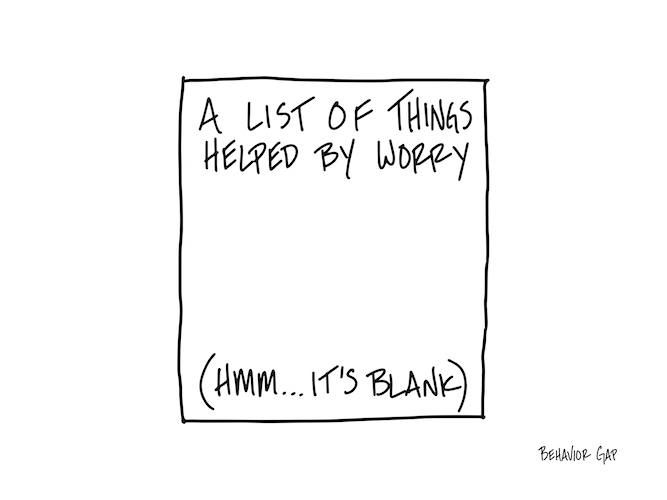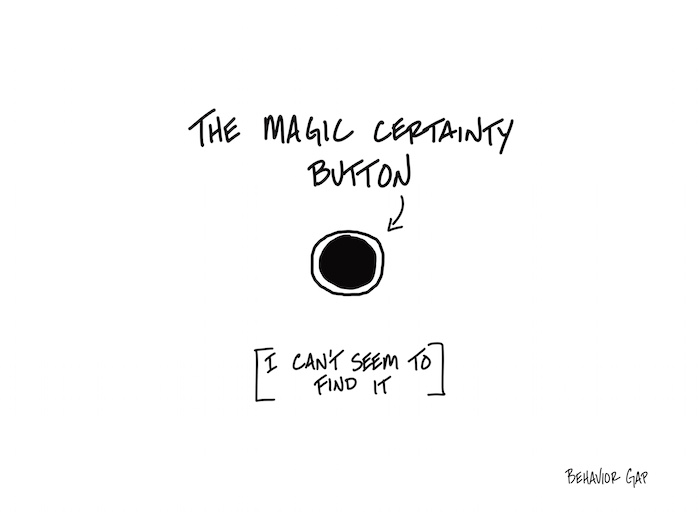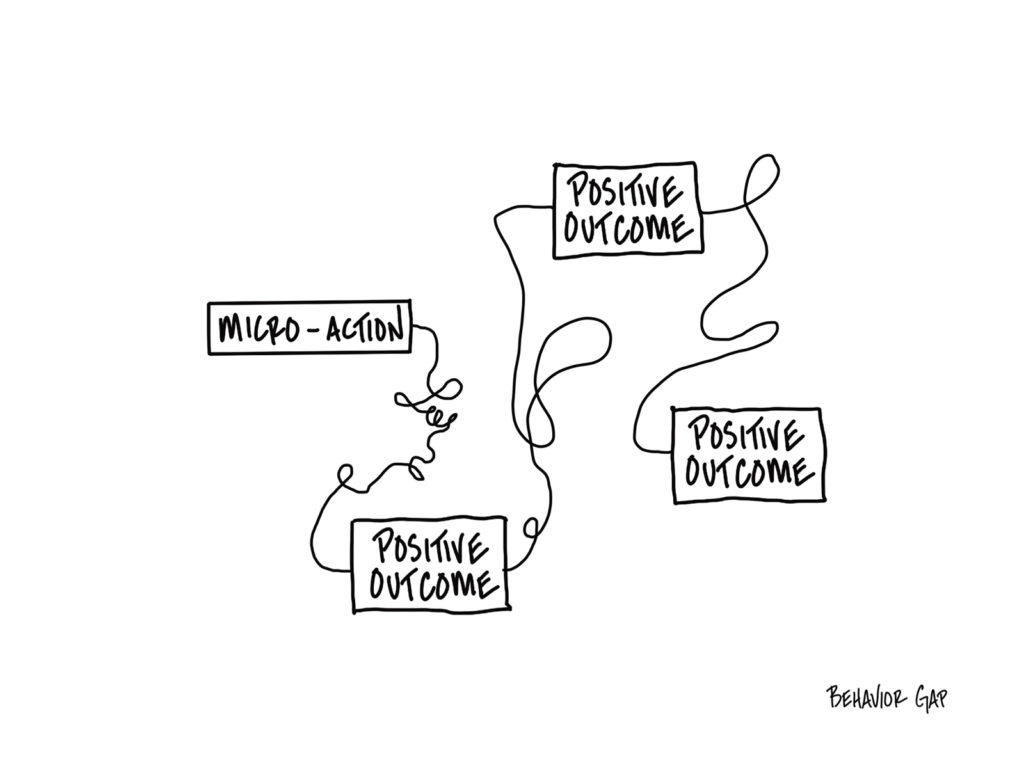Details Are Part of Our Difference
Embracing the Evidence at Anheuser-Busch – Mid 1980s
529 Best Practices
David Booth on How to Choose an Advisor
The One Minute Audio Clip You Need to Hear
Author: Carl Richards
Things Helped By Worry

Worry is a terrible strategy for solving problems.
But I have a confession to make: for a very long time, it was the only one I knew.
For example, each time I wrote a column for The New York Times, I was worried my editor would say, “Sorry, Carl, this just isn’t very good, I’m afraid that is the end of the Sketch Guy.” And then I would have to crawl under a rock, never to be heard from again.
I would bring my worries to my business partner (AKA wife). I would go on and on about, “What are we going to do if this happens?!” And when she seemed totally calm, I would say, “Aren’t you worried?!”
Because she’s generally unflappable, she would say, “I could be, if you want me to be, but I don’t see how it would help.”
It might feel like worrying helps. But as Shantideva put it:
“If you can solve your problem, then what is the need of worrying? If you can’t solve it, then what is the use of worrying?”
Worrying endlessly about something that may or may not happen in the future doesn’t help. But making a plan for what to do if that thing comes to pass does.
So now, when I catch myself starting to worry—which is often—I try to sit down and make a plan. And then I take that plan, file it away, and stop thinking about it.
That’s it. I don’t need to worry about that scenario anymore, because I have a plan.
Next time you find yourself in one of those cycles of worry, remember what Shantideva said. Action is a strategy, worry is not. So make a plan, put it away for safekeeping, and get back to work.
There’s No Such Thing as a Magic Certainty Button

Sorry to burst your bubble.
There is no spreadsheet that can guarantee you will be fine. There is no amount of money that can guarantee you’ll always have enough. Uncertainty equals reality.
But that doesn’t mean we should live our lives petrified with fear.
Once we accept that the Magic Certainty Button doesn’t exist, we can stop looking or hoping for it. We can take all that wasted time and energy, and use it to do something more helpful—like repeating Reinhold Niebuhr’s Serenity Prayer over and over again.
God, grant me the serenity to accept the things I cannot change, courage to change the things I can, and wisdom to know the difference.
Not into prayers or mantras? Try this:
1. Make a list of all the things that matter that you can control.
2. Look at that list and put a big, fat checkmark next to everything you’ve addressed to the best of your ability.
3. Whatever you didn’t check off, take some time to work on it.
4. Any time you start craving that Magic Certainty Button, just go back to that list, and remind yourself that you have done everything you can (or if you haven’t, then do whatever you can).
5. Let go of the rest.
If you can do that—specifically, if you can make it all the way to step 5—you’ve got a touchstone for what can help you feel just a little more comfortable in an uncertain world.
Image of the Month

When tackling big, audacious goals, you don’t need big, audacious actions. All you need is the contagious magic of micro-actions.
Let me give you an example.
When I travel, I often don’t feel like exercising, even though I know I’ll feel way better if I
do. So, in the morning, I don’t commit to a program to lose 12 pounds in twelve days or promise myself to run for 40 minutes. I just put on my gym clothes.
That’s it.
And then, since my gym clothes are on, I almost always decide to just walk to the gym and take a look.
What happens next is what almost always happens when I step into a gym: I see the bikes and think, “I bet it will feel good to get on one of those for a few minutes.” So I do.
And other exercises naturally follow that.
After I exercise, I think, “Man, it would feel great to stretch,” so I do that, too. And then, since I’m on a roll, I decide to eat a healthy breakfast instead of sugary garbage. Later at work, I’m extra productive since my body feels great.
See what I mean about contagious?
There’s a reason 80% of New Year’s Resolutions fail. The problem isn’t the goals, it’s the way we go about trying to tackle them. We try to go big and burn out, forgetting that “slow and steady wins the race.”
The magic here is in breaking down big, hard, sometimes even scary goals into attainable pieces. Find something small and attainable you can do, start there, and let the contagious magic of micro-actions do the rest.

